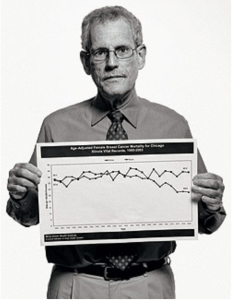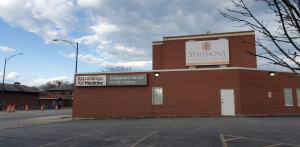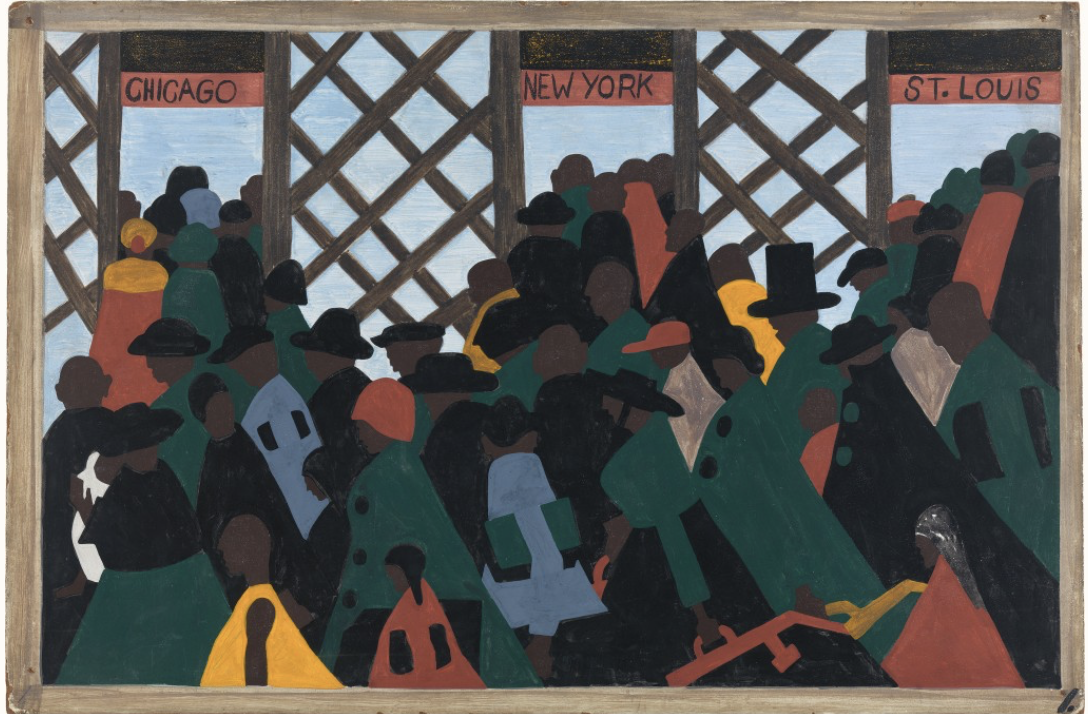We’ve all become used to what doctors and other experts on the cable news shows say—people with underlying conditions are much more vulnerable to the COVID 19 virus and are in much greater danger of becoming seriously ill and dying. Those underlying conditions have been identified, among others, as heart disease, diabetes, lung ailments, suppressed immune systems, and obesity (although there also appear to be some odd factors that don’t quite add up—like the greater likelihood that younger men will get infected and die more often than younger women).
Within the last few days, a stark and frightening addition has been added to that more or less routine pronouncement. Being African-American has been added to the list of underlying conditions. To understand what they’re talking about, let’s look at Chicago—which might be considered the center of the explosive rates of African-American infections and deaths.
The Chicago Sun-Times recently reported that: “Auburn Gresham’s 60620 zip code now has the highest number of confirmed coronavirus cases of any Chicago zip code, with 359 cases, according to data from the Illinois Department of Public Health. Neighboring communities to the south and east also have high numbers, with the 60619 zip code at 306 cases and 60628 at 288.”
Here’s a map that visually highlights the difference in rates of confirmed cases, from about ten days ago. There’s little reason to think that the pattern has changed since and the numbers are all but certainly worse.

As the map reveals, all three of those zip codes are for neighborhoods in the Far Southeast Side of Chicago with large concentrations of African-American residents.
The statistics were released by local Chicago aldermen who were using them to urge the residents of the areas to take more seriously the recommendations that they keep their distances from each other than they appeared to be doing. The aldermen pleaded: “We don’t want to arrest ourselves out of this. First responders are already putting their lives on the line and when people don’t listen we have to use more resources that could’ve gone elsewhere…”
The Sun-Times journalist offered an all too familiar explanation for the dismal realities: “Officials have pointed to a wide range of reasons for the high number of cases in African-American communities, from historic disinvestment that’s led to wide health care disparities for generations to higher numbers of residents working essential jobs that don’t allow for working from home.”
Another dimension of the developing situation is the state of testing in Chicago. A local TV station reported on which neighborhoods have high rates of testing and which don’t—based, once again, on data organized by zip code.
While many zip code areas with the most cases (on the city’s South and West Sides) also have the most tests, some zip code areas on the North Side zip codes (the whiter parts of the city) have a “disproportionate amount of testing.” The station’s analysis of the data revealed that some zip codes that rank among the highest numbers of tests per 1,000 residents rank lower in terms of cases. For example, zip code 60623 in Lawndale ranks 53rd for the number of tests per 1,000 residents, but ranks 23rd for most cases. In Austin on the West Side, zip code 60644 has the 4th most cases, but the 26th most tests.Meanwhile, zip code 60657 in Lakeview (on the North Side) has the 32nd most tests but the 47th most cases. And in Streeterville (also on the North Side), zip code 60611 has had the 7th most tests, but ranks 49th in terms of cases. It’s evident that those who have less reason to be concerned often enough can jump to the front of the line for testing. Viewed from another angle, the lack of testing in some high incidence areas likely means that the actual number of cases is higher than reported.
For all practical purposes, the reasons cited by the Sun-Times appear to have become simple facts of nature and there is little to be done other than to pray. But it was not supposed to be that way. In the years since the triumphs of the Civil Rights movement (from the mid-1950s to the late 1960s), those inequities were supposed to be understood as fundamentally not natural but social and, therefore, gradually to be sure, eliminated. A 2007 article in The Chicago Magazine highlighted what was and wasn’t happening. The story has not changed much in the years since.
The article began: “The good news is that overall health has generally improved among all racial and ethnic groups over the past few decades.” But, it went on to say: “The bad news is that the gaps remain stubbornly wide, and that Chicago is out of step with the country in narrowing disparities.” It summarized the work of a Chicago epidemiologist, Steve Whitman:
… over the past several years Whitman’s organization—the research arm of Sinai Health System, which operates Mount Sinai Hospital—has conducted a number of other studies in Chicago that, taken together, paint a disturbing picture of a city in which poor and minority populations bear an undue burden of preventable disease, suffering, and early death. If the city’s black population enjoyed the same level of health as its white population, Sinai researchers contend, the average African American in Chicago would live eight years longer than he or she does today. Meanwhile, 4,000 fewer local African Americans would die each year—an annual toll that surpasses all U.S. military deaths thus far in Iraq.
Whitman spoke for himself: “If a Martian landed in Chicago and you walked down the street and told him that, on average, this person is going to live eight years less than that person, the Martian would say, ‘How in the world do you know that?’” Whitman says. “And I’d say, ‘It’s simple: We’ve arranged things in this country so that the darker your skin, the shorter your life will be.’”

Steve Whitman
(Steve, an exemplary scientist and a passionate political activist and a friend of some of the Hard Crackers founders, died in 2014.)
The author ended on an optimistic note: “If Whitman is right—that our racial divide in health results from the way we’ve arranged things—it seems at least possible that we can rearrange things to close it. …. One medical expert was quoted: ‘Given the data we have and what we know about prevention, I think that 20 years from now we’ll be able to say, We had a big problem, and we fixed it.’
Well, we’re not quite twenty years later but it’s clear that very little has been fixed. The underlying conditions destroying the lives of African-Americans in Chicago and elsewhere are much more than the specific diseases that make them ill and vulnerable. They are the concentrated totality of their life circumstances—bad housing, lousy schools, rotten health care, intense policing, more or less constant imprisonment for many, frequent unemployment, low-paid and life-threatening jobs, no sick leave, very limited access to high-quality foods, high levels of air pollution, and probably more. Those circumstances are the real underlying conditions that place them at risk. And then they get sick—a condition that’s much worse than it needs to be in “normal” times and, more or less, catastrophic in these times.
The underlying conditions, as all too many seem to assume, are not their identities as African-Americans. There are many African-Americans, even in Chicago, who are at little risk because their life circumstances have all but nothing in common with the working class communities of places like Far Southeast Chicago.[1] At the same time, they may well be the victims of careless inattentiveness, if not malpractice, in health care settings. In spite of Barack Obama, the social contempt for African-Americans is not yet extinguished.

(Symphony South Shore Nursing home, the epicenter of the coronavirus)
Circumstances eventually include more than the things we can measure; they include the things that people do and how they think. Indeed, how people act may well be the only thing that can make a real difference. While following precautions at the moment is probably indispensable, other more radical acts will be necessary in the near or far future.
The underlying conditions in Chicago, and elsewhere, set the stage for what might come next. Let’s hope that it’s enough.
[1]An incisive and penetrating analysis of these issues, “The Black Plague,” has been published by Keeanga-Yamahtta Taylor in The New Yorker on April 16th. It’s available at https://www.newyorker.com/news/our-columnists/the-black-plague. If anything, in these days of information and analysis overload, deserves to be considered indispensable, this article should be.

